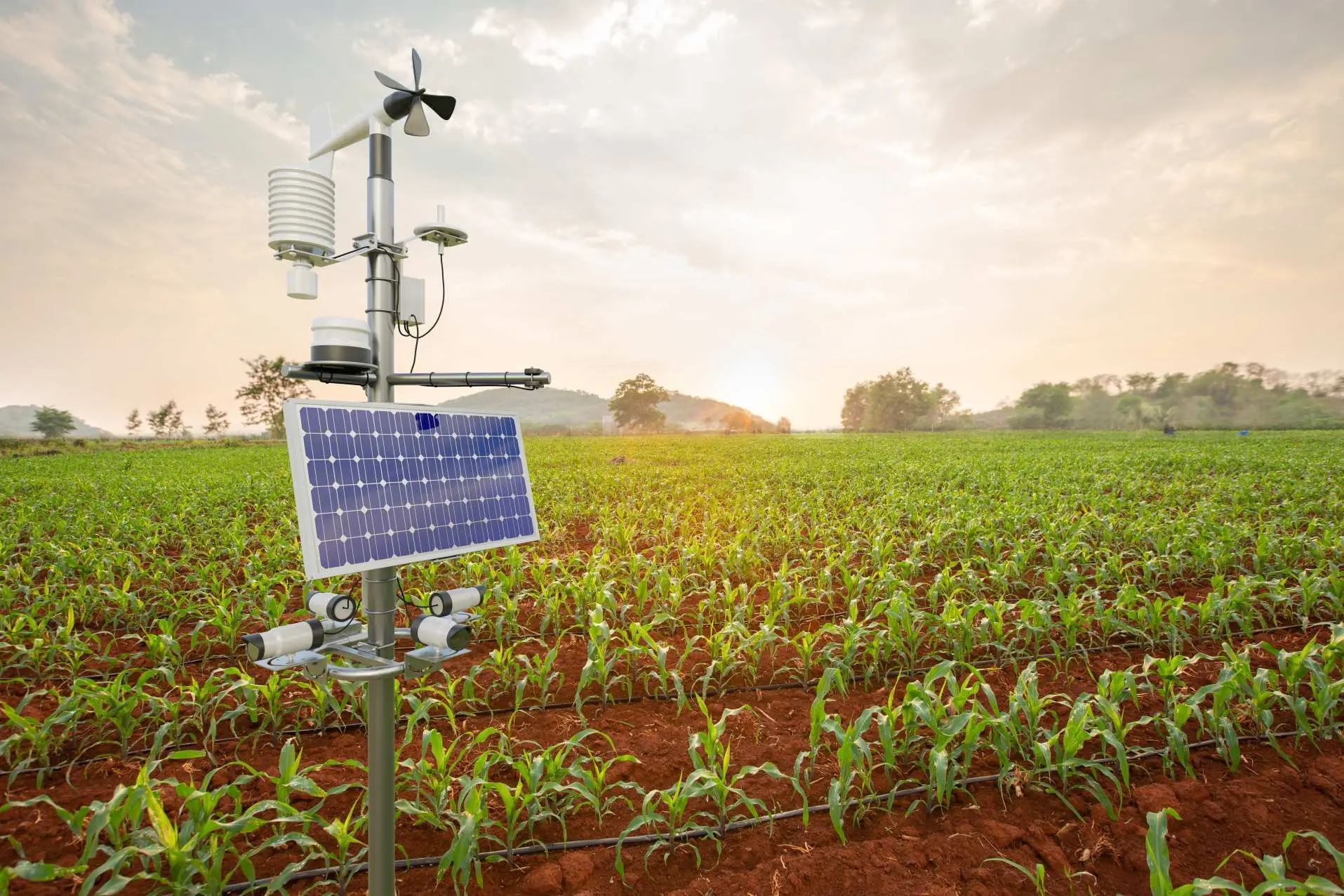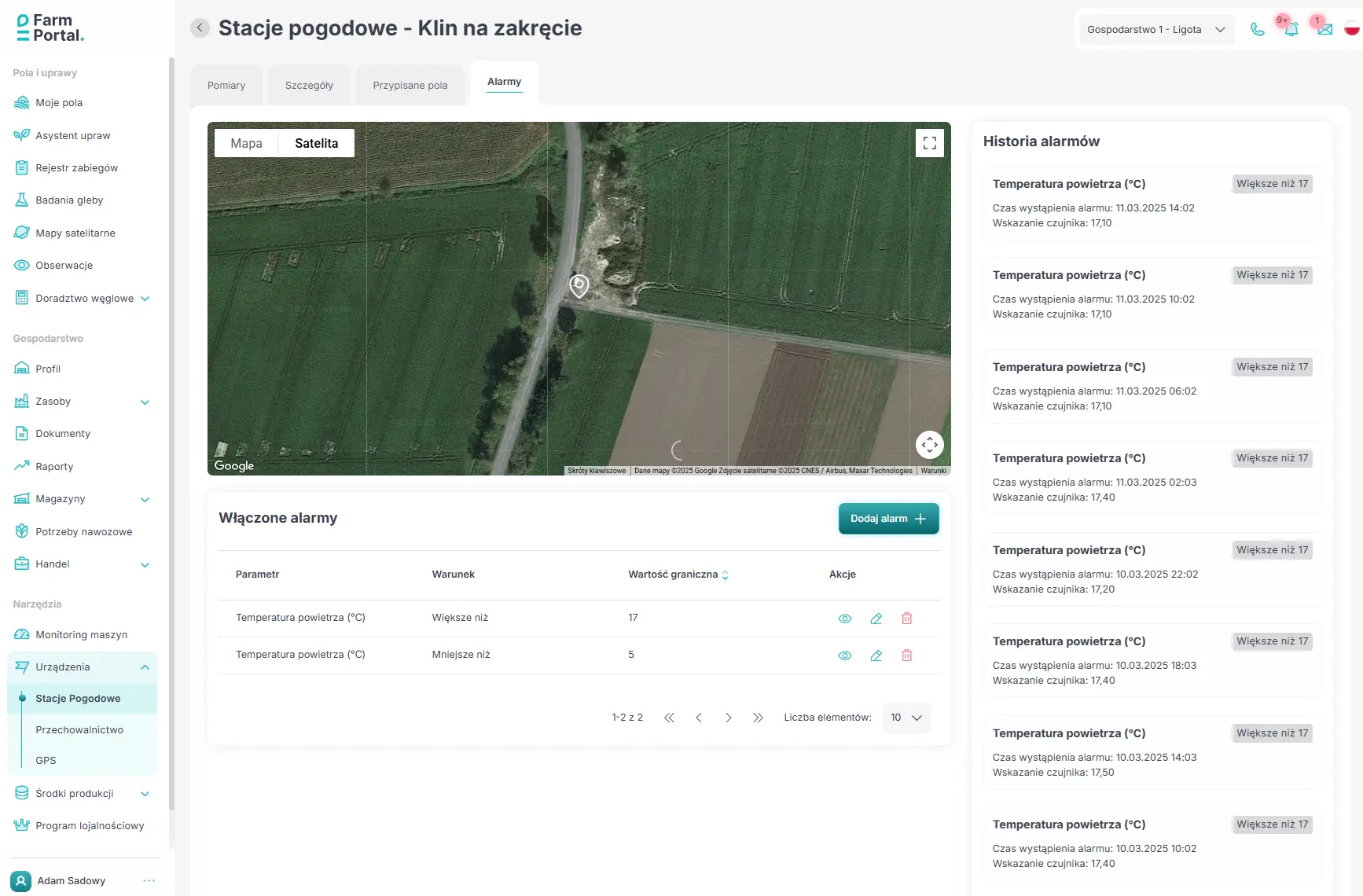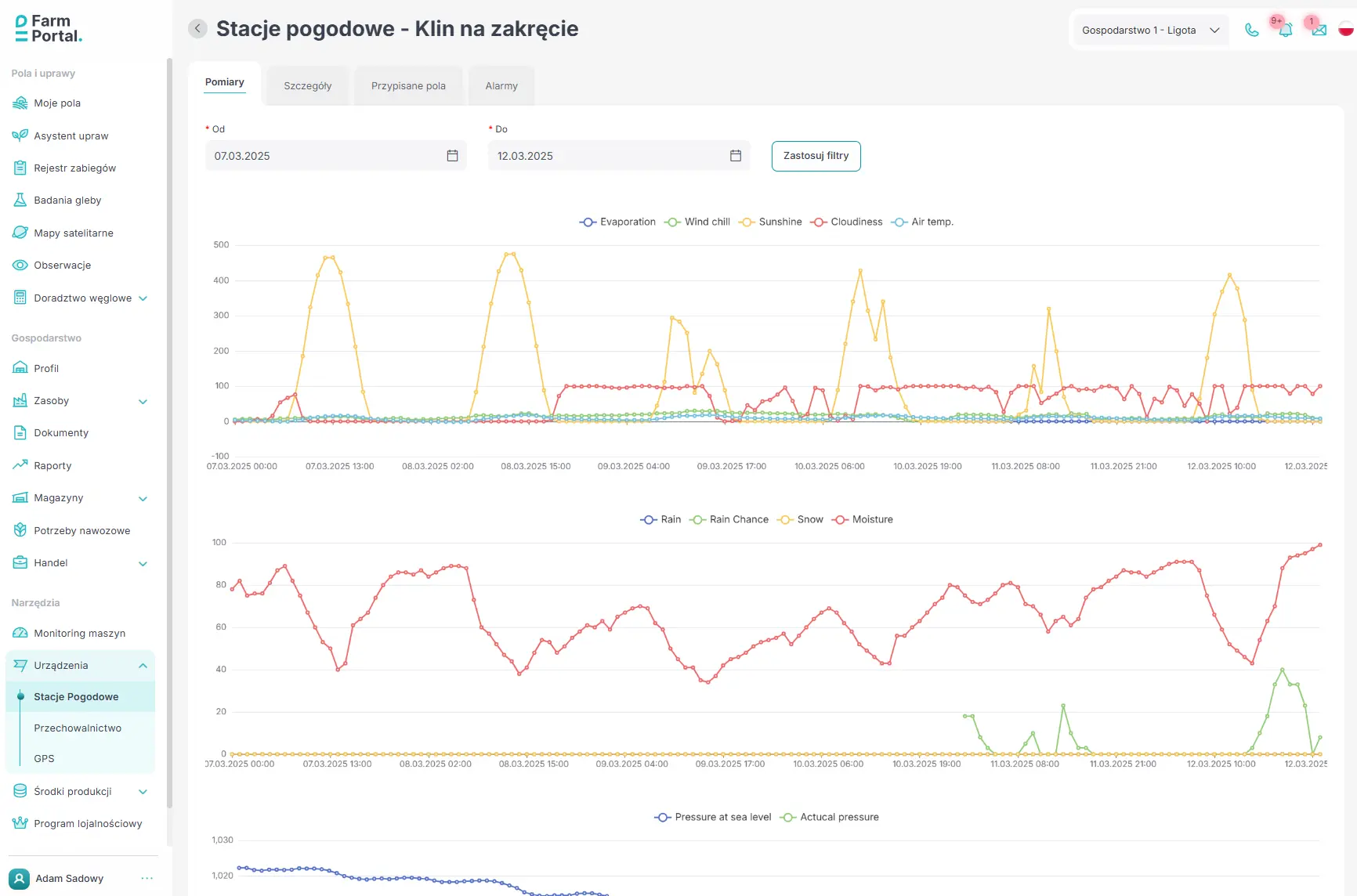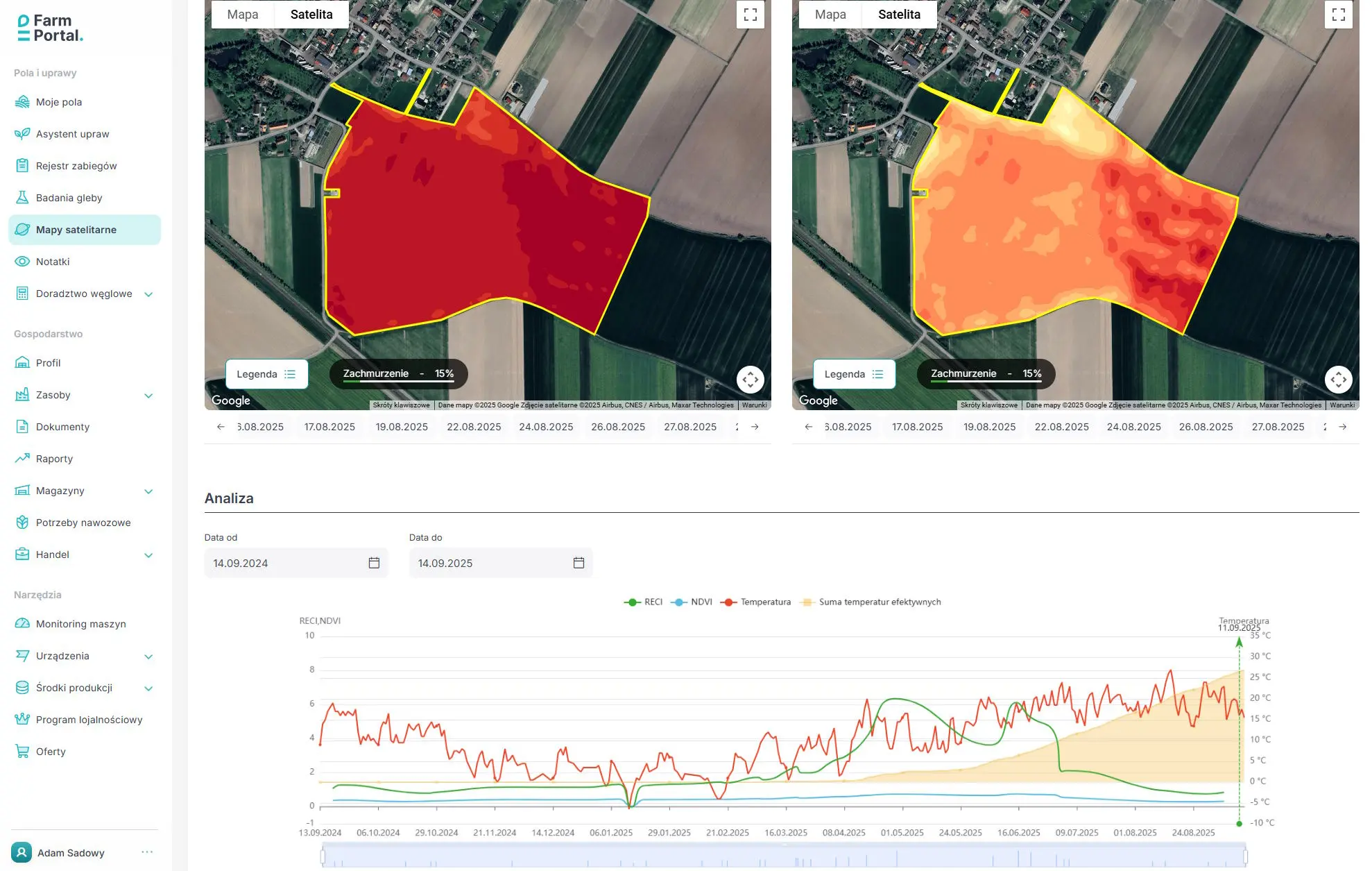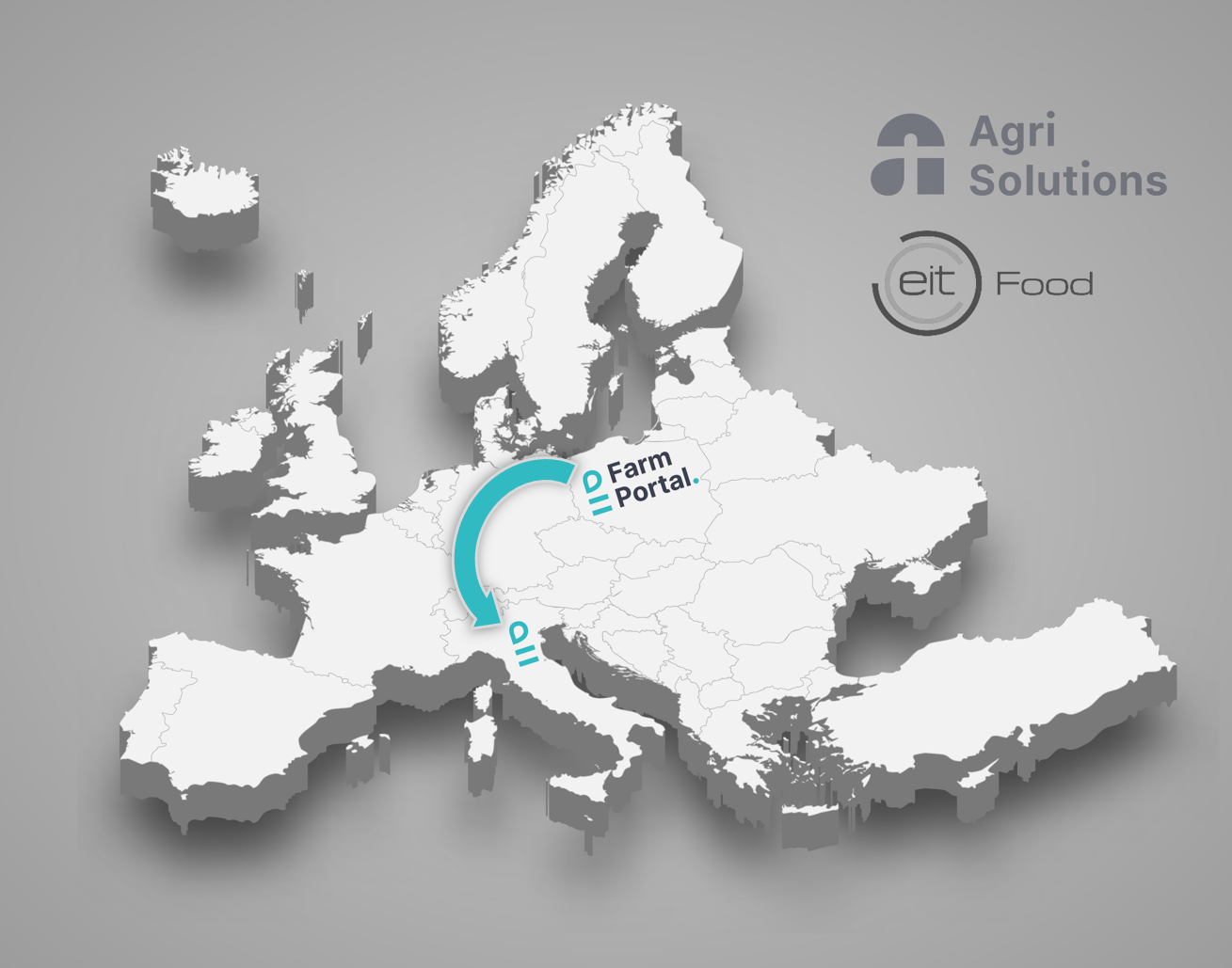With FarmPortal, you can connect meteorological stations from various manufacturers (e.g., Atmesys, Metos, etc.). Additionally, a virtual meteorological station is created for each field to monitor atmospheric conditions.
The Greatest Benefits of Owning Your Own Meteorological Station
- Rapid response to extreme weather events – warnings about frosts, hail, or drought allow for timely crop protection and loss reduction.
- Precise plant protection through disease models – the ability to predict and prevent diseases based on real weather data.
- Optimized irrigation and water savings – accurate measurements of soil and atmospheric moisture enable precise irrigation management.
- Support in planning field operations and harvests – monitoring temperature sums, humidity, and other parameters helps determine the optimal timing for sowing, fertilizing, or harvesting.
Disease Models – Precise Plant Protection
One of the most important features of modern meteorological stations is the use of disease models. These models enable farmers to predict the risk of plant diseases – with dozens of models available for various crops. The stations monitor key parameters such as humidity, temperature, precipitation, and dew point, allowing algorithms to determine the conditions that favor pathogen development. This means that protective measures can be taken precisely when there is a real threat, thereby optimizing the use of plant protection products.
Rapid Response to Frosts and Hailstorms
Your own meteorological station enables continuous monitoring of weather changes, which is crucial in the case of extreme events like frosts or hail. Early warnings allow for the implementation of protective measures – for example, applying anti-frost sprays or activating mechanical protection systems. In the event of hail, the farmer can plan harvests accordingly to avoid losses.
Get financing for purchasing meteorological stations
,
Modern Capabilities of Agricultural Meteorological Stations
Today’s meteorological stations are more than just devices for measuring temperature and humidity. Equipped with sensors for wind, sunlight, soil moisture, and integrated with GPS systems and mobile applications, they provide complete control over the field’s microclimate. The ability to analyze temperature sums, monitor drought conditions, or forecast growing periods supports the precise planning of field operations.
Automatic meteorological stations, such as Atmesys Agro or Metos, offer even more advantages. With precise measurements of soil moisture and atmospheric parameters, they enable optimized irrigation, leading to significant water savings. These systems allow for adjusting the start and finish times of irrigation and precisely determining the water dosage, which is crucial for sustainable water resource management. Moreover, automatic stations minimize the need for manual readings by ensuring continuous access to real-time data.
Integration with FarmPortal Software
One of the leading solutions for managing meteorological data in agriculture is the FarmPortal software. This platform integrates with modern meteorological stations, providing real-time access to data and enabling analysis based on advanced predictive models. FarmPortal also offers features that support the planning of field operations, crop monitoring, and forecasting weather-related threats, allowing farmers to fully harness the potential of their meteorological stations.
In the concept of Agriculture 4.0, meteorological stations become part of integrated farm management systems. Thanks to IoT (Internet of Things) connectivity, weather data is transmitted in real time to analytical platforms that aid in decision-making. Agriculture 5.0 takes it a step further by using artificial intelligence and machine learning to develop advanced predictive models.
Planning Harvests and Field Operations
Accurate meteorological data allows for the precise determination of optimal timings for sowing, fertilizing, and harvesting. Monitoring temperature sums enables forecasting of plant growth stages, while soil moisture analysis allows for rational irrigation management.
Summary
Having your own meteorological station is a tool that not only increases yields but also optimizes costs and reduces the risk of losses. In the era of Agriculture 4.0 and 5.0, precise weather data analysis forms the foundation of modern, sustainable farming.

